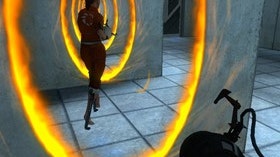Homepage
•
Learning Library
•
Blog
•
Teach physics with the popular video game Portal
Expand breadcrumbs
Expand breadcrumbs
- Learning Library
- Blog
- Teach physics with the popular video game Portal
- Homepage
- •
- Learning Library
- •
- Blog
- •
- Teach physics with the popular video game Portal
Teach physics with the popular video game Portal
By Andrew Coleman
August 23, 2016








